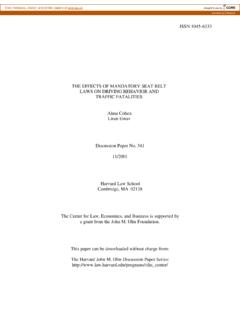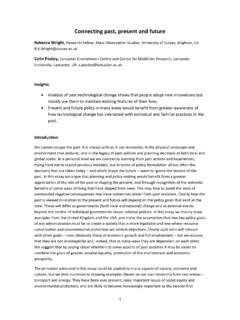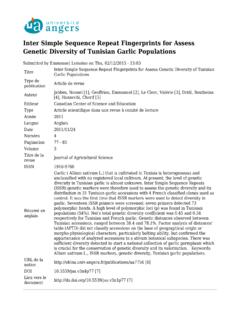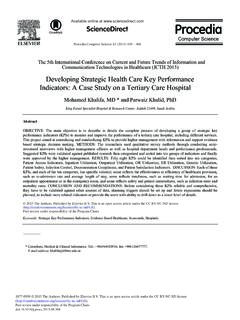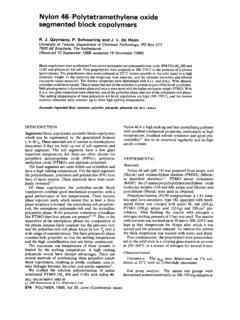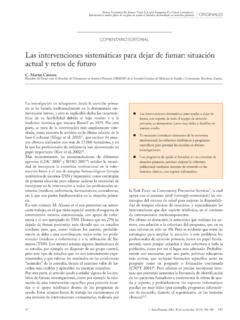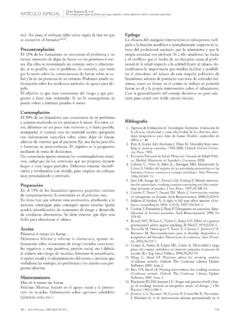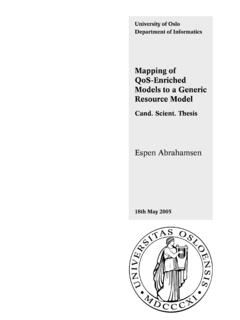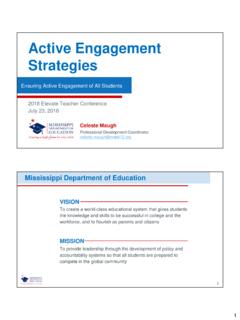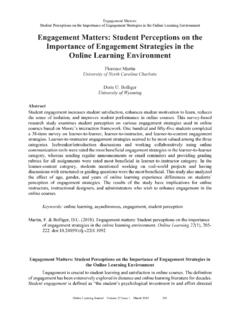Transcription of LEARNER ENGAGEMENT STRATEGIES IN ONLINE CLASS …
1 LEARNER ENGAGEMENT STRATEGIES IN ONLINE CLASS ENVIRONMENT A Dissertation by MISHA CHAKRABORTY Submitted to the Office of Graduate and Professional Studies of Texas A&M University in partial fulfillment of the requirements for the degree of DOCTOR OF PHILOSOPHY Chair of Committee, Committee Members, Head of Department, Fredrick M. Nafukho Jessica Yue Kelli Peck-Parrott Ben Welch Fredrick M. Nafukho May 2017 Major Subject: Educational Human Resource Development Copyright 2017 Misha Chakrabortybrought to you by COREView metadata, citation and similar papers at by Texas A&M Universityii ABSTRACT This dissertation explores the area of student ENGAGEMENT . Precisely, the dissertation attempts to find out the importance, roles, significance and factors involved in ONLINE student ENGAGEMENT and their consequences in achieving a positive learning environment. The first stream of inquiry investigated the perceived links between students perceived learning, motivation and attitude towards learning, that can be manipulated through careful usage of appropriate instructional STRATEGIES .
2 Manuscript one is a literature review, which highlights student ENGAGEMENT STRATEGIES in ONLINE classes. The STRATEGIES revolved around two important domains: Instructor presence and teaching immediacy. The purpose of this was to identify pertinent studies on the important issue of student ENGAGEMENT STRATEGIES in ONLINE courses and student ENGAGEMENT STRATEGIES that work. The second is the extension of the first s findings. Instructor presence and teaching immediacy are two important constructs highlighted in the first. The role and significance of teaching presence and teaching immediacy are presented in the second, which is a literature review to find out the importance of these two constructs in achieving student ENGAGEMENT . The successfully identified three areas of importance in ONLINE learning environment are learners attitude, motivation and learning. The third establishes solid theoretical foundation by asserting the importance of understanding the big picture of learning and teaching through relevant theories.
3 The assumptions for the fourth empirical study are delved from this. iii The fourth is an empirical study that looks at the effect of teaching presence and teaching immediacy on students motivation, affective learning, and cognitive learning. The forth study attempts to find out the influence of teaching presence and teaching immediacy on students motivation, affective learning and cognitive learning. Teaching presence is established to have positive influence on students motivation, affective learning and cognitive learning. iv DEDICATION To my family, advisors, friends, colleagues and mentors who have greatly influenced, supported, and guided me throughout my lifetime and in this scholarly endeavor. v ACKNOWLEDGEMENTS I would like to thank my committee Chair Dr. Fredrick M. Nafukho, for his encouragement, motivation and support throughout my learning endeavor at Texas A&M University. Dr. Nafukho s consistent guidance and wisdom helped me understand and explore various facets of scholastic quests, collegiality and academic integrity.
4 His leadership guided me towards the right direction and I learned not only about academic demeanor but life as a whole. I also want to extend my gratitude to my committee members Dr. Helen Muyia, Dr. Jessica Yue and Dr. Ben Welch for their time, thoughtful guidance and encouragement. Their help and support always acted as propeller to achieve my goal as a LEARNER . I feel fortunate to have achieved the opportunity to learn from the best in our field. I also would like to thank all the participants, who took their time to complete the survey questionnaire. My grateful thanks go to Dr. Kelly PeckParrott, Dr. Goodson, Dr. Hutchins, Dr. Consuelo Waight, Dr. Jia Wang, Dr. Dominique Chlup, and Devaron Yates. I feel obliged to all the faculty at Texas A&M University as I learned very significant lessons about academic and professional spheres from each one of them. Thanks a lot for implanting the Aggie values and traditions in me. Thank you to all my colleagues and friends for making experiences at Texas A&M so special.
5 I am grateful forever to all the mentors in various phases of life. Finally, I express my utmost gratitude to my mother, father, husband, darling daughter, and many other family members and friends for their kind support, trust, patience, prayers, encouragement, and love. vi vii TABLE OF CONTENTS PageABSTRACT .. ii DEDICATION .. iv ACKNOWLEDGEMENTS .. v TABLE OF CONTENTS .. vii LIST OF FIGURES .. x LIST OF TABLES .. xi CHAPTER I INTRODUCTION .. 1 Impetus for Selecting the Topic: ONLINE CLASS ENGAGEMENT .. 2 Collaboration in Conducting Research .. 5 Overview of Dissertation .. 6 II STRENGTHENING STUDENT ENGAGEMENT : WHAT DO STUDENTS WANT IN ONLINE COURSES? .. 7 Synopsis .. 7 Introduction .. 8 Problem Statement and Purpose .. 10 Research Questions .. 10 Method for Selection of Studies .. 15 Findings .. 17 Discussion .. 26 Implications .. 31 Limitations and Future Research Areas .. 33 III THEORY IN ONLINE LEARNING: A DELINEATION OF STUDENT-CENTERED APPROACH.
6 35 Synopsis .. 35 Introduction .. 35 Theoretical Framework .. 39 viii Purpose and Research Questions .. 40 Method .. 41 Constructivist Learning Theory in E-Learning Classes .. 43 Transformative Learning Theory in E-Learning Classes .. 48 Social Learning Theory in E-Learning Classes .. 52 Implications and Conclusion .. 57 IV STRATEGIES FOR VIRTUAL LEARNING ENVIRONMENT FOCUSING ON TEACHING PRESENCE AND TEACHING IMMEDIACY .. 60 Synopsis .. 60 Introduction .. 61 Theoretical Framework .. 65 Purpose and Research Questions .. 67 Methodology .. 68 Findings and Discussions .. 71 Conclusions and Future Research Area .. 83 V EMPIRICAL STUDY HIGHLIGHTING THE EFFECT OF TEACHING PRESENCE AND TEACHING IMMEDIACY ON STUDENTS MOTIVATION, AFFECTIVE LEARNING AND COGNITIVE LEARNING .. 85 Synopsis .. 85 Introduction .. 85 Background and Problem Statement .. 88 Purpose of the Study .. 91 Significance of the Study .. 93 Limitations of the Study.
7 96 Operational Definitions of Key Terms .. 97 Methodology .. 99 Instrumentation .. 102 Validity of the Instrument .. 103 Reliability of the Instrument .. 104 Data Collection Procedures .. 105 Data Analysis .. 107 Findings .. 109 Hypotheses Testing .. 113 Discussion .. 120 Implications and Conclusion .. 123 Limitations .. 124 ix VI SUMMARY AND CONCLUSIONS .. 126 Recommendations for the Future Studies .. 130 REFERENCES .. 133 APPENDIX 1 .. 148 APPENDIX 2 .. 157 APPENDIX 3 .. 158 APPENDIX 4 .. 159 APPENDIX 5 .. 164 x LIST OF FIGURES Page Figure 1 Community of Inquiry (CoI) Model .. 40 Figure 2 Literature Search Process and Area of Interests .. 69 Figure 3 Scatterplot of the Relationship Between Teaching Immediacy and Teaching Presence .. 115 xi LIST OF TABLES Page Table 1 Empirical Findings of ONLINE Student ENGAGEMENT STRATEGIES Capacity .. 22 Table 2 ONLINE CLASS ENGAGEMENT STRATEGIES .. 29 Table 3 ONLINE Learning STRATEGIES in the Context of Social Presence, Cognitive Presence and Teaching Presence.
8 56 Table 4 ONLINE Discussion Facilitation Guideline .. 75 Table 5 Role of Instructors in ONLINE CLASS Environments .. 80 Table 6 The Approximate Number of Target Participants.. 101 Table 7 Reliability of the Instrument .. 105 Table 8 Statistical Procedures Used to Address Each Hypothesis .. 107 Table 9 Descriptive Data .. 113 Table 10 Initial Simple Pearson Correlation Coefficient Matrix .. 114 Table 11 Pearson Correlation .. 115 Table 12 VIF and Relation of Teaching Presence and Teaching Immediacy with Learners Affective Learning .. 117 Table 13 Relation of Teaching Presence and Teaching Immediacy with Learners Cognitive Learning .. 118 Table 14 Relation of Teaching Presence and Teaching Immediacy with Learners Motivation .. 119 1 CHAPTER I INTRODUCTION This dissertation explores the area of student ENGAGEMENT . Precisely, the dissertation attempts to find out the importance, roles, significance and factors involved and their consequences in achieving positive learning environment for all students.
9 The first stream of inquiry investigated the perceived links between students perceived learning, motivation and attitude towards learning. Students attitude towards learning, motivation and students learning perception can be manipulated through careful usage of appropriate STRATEGIES . Manuscript one is a literature review that highlights student ENGAGEMENT STRATEGIES in ONLINE classes. The STRATEGIES revolved around two important domains: Instructor presence and teaching immediacy. The purpose of this was to identify pertinent studies on the important issue of student ENGAGEMENT STRATEGIES in ONLINE courses and to student ENGAGEMENT STRATEGIES that work. The second is the extension of the first s findings. Instructor presence and teaching immediacy are two important constructs highlighted in the first. The role and significance of teaching presence and teaching immediacy are presented in the second, which is a literature review to find out the importance of these two constructs in achieving student ENGAGEMENT .
10 The successfully identified three student ENGAGEMENT STRATEGIES in ONLINE learning environments: learners attitude, motivation and cognitive learning. The third establishes solid theoretical foundation by asserting the importance of understanding the big picture of learning and teaching in ONLINE environments through relevant theories. 2 The forth is an empirical study that looks at the effect of teaching presence and teaching immediacy on students motivation, affective learning, and cognitive learning. Impetus for Selecting the Topic: ONLINE CLASS ENGAGEMENT My role as technology teaching assistant in the department of Educational Administration and Human Resource Development provided me with the opportunity to design and develop many ONLINE classes and therefore, presented a firsthand experience with the students participation, issues and strengths in ONLINE classes. My role as technology teaching assistant (TA) made me interested to explore the area of ONLINE ENGAGEMENT and look for STRATEGIES to create positive learning experiences for the virtual learners.
